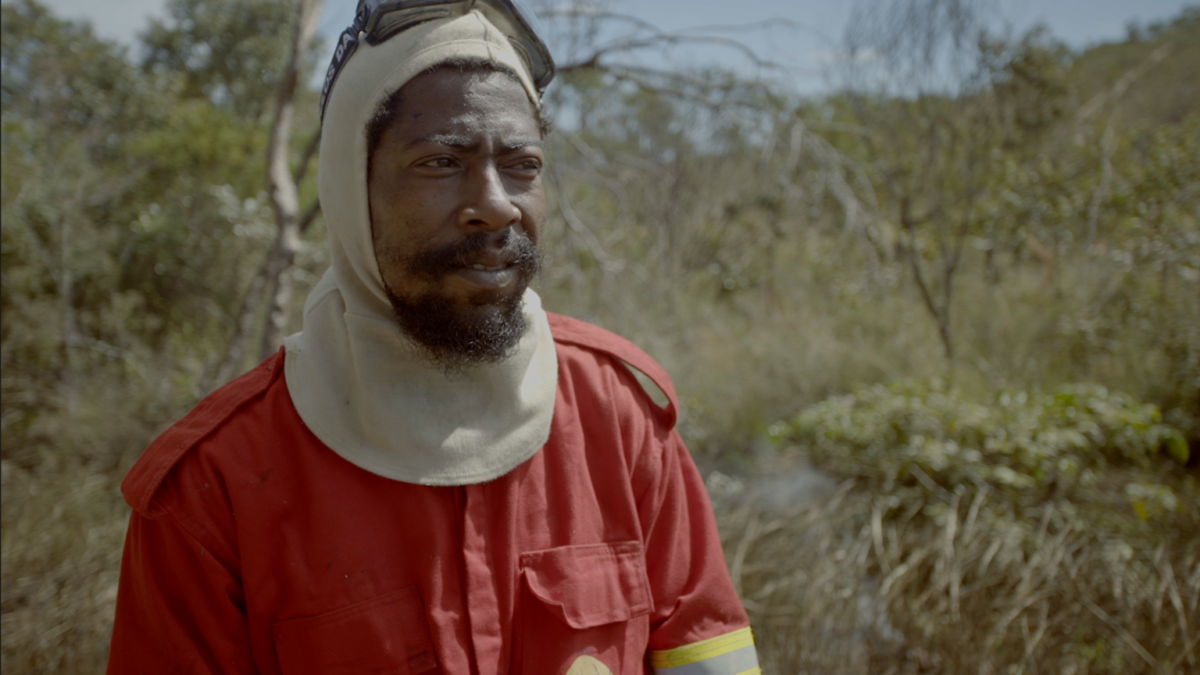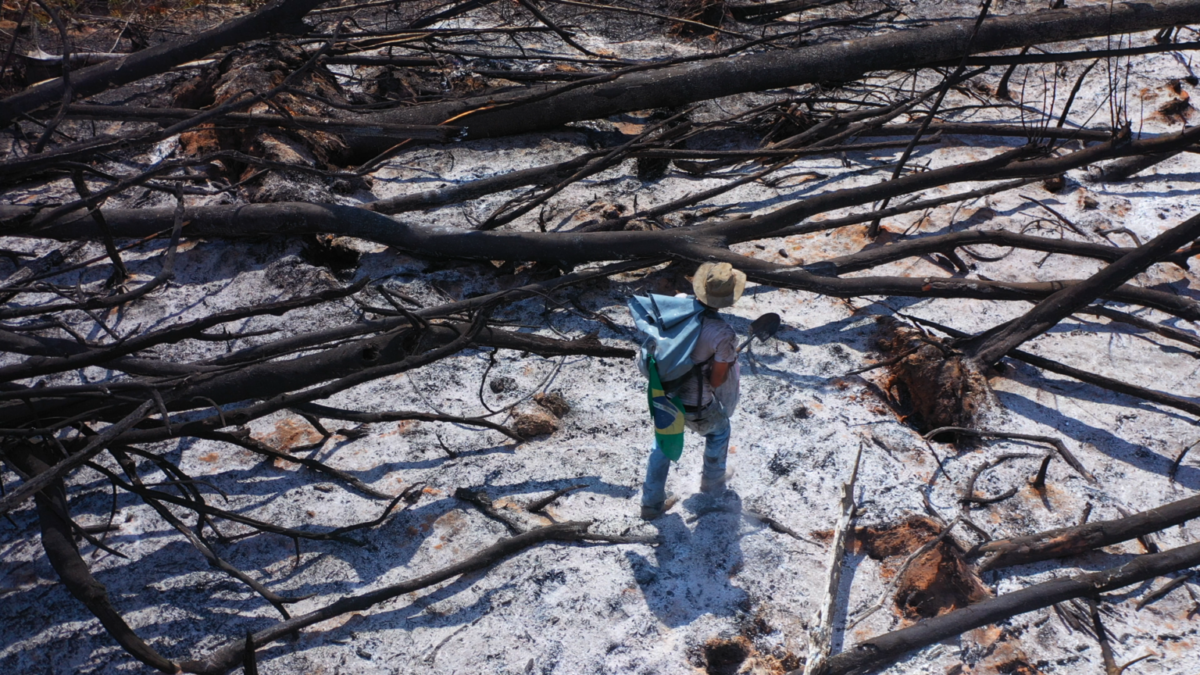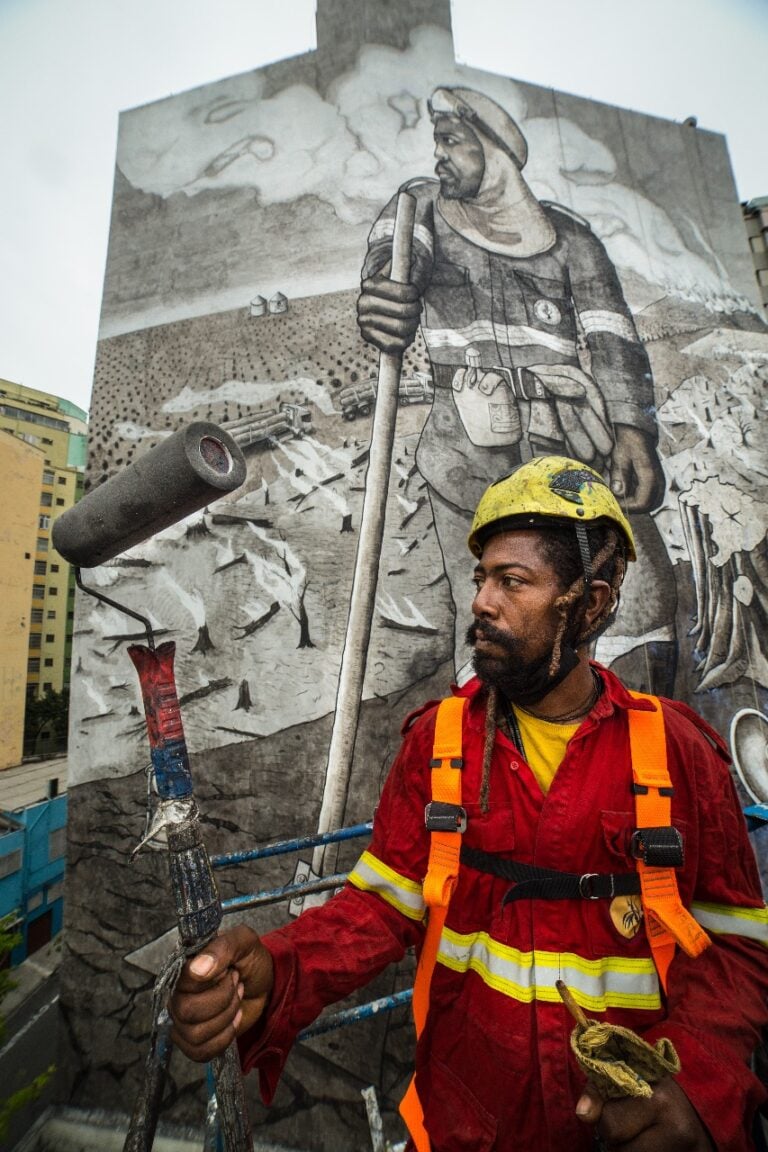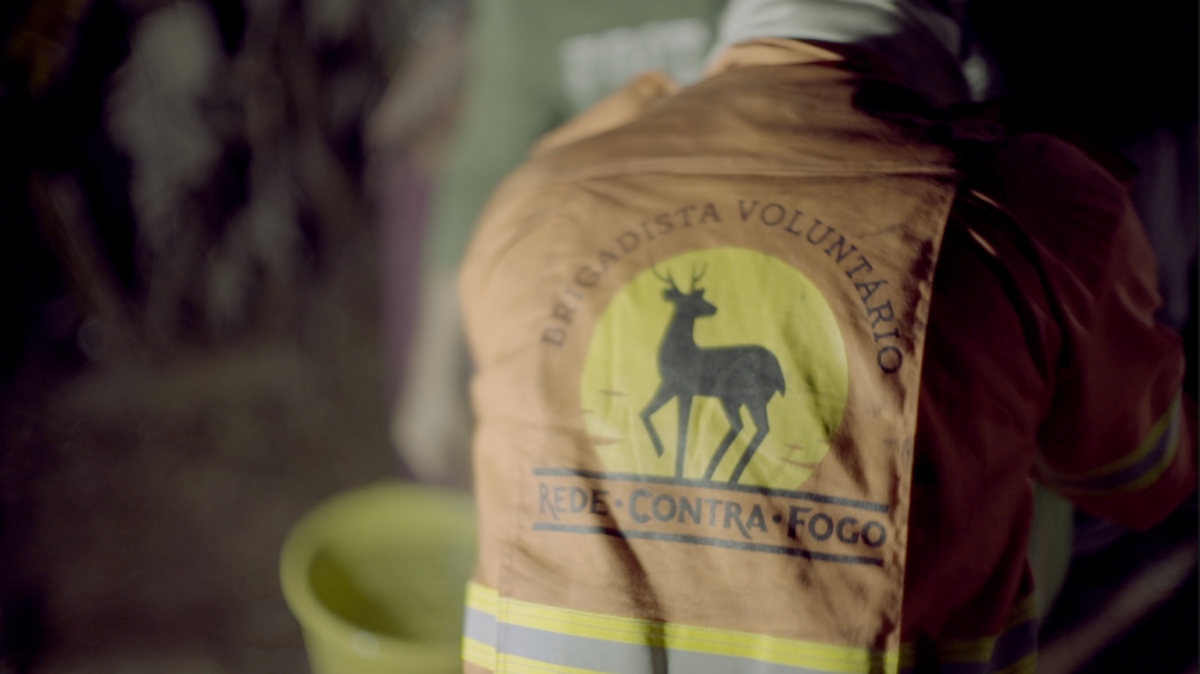Honest, paywall-free news is rare. Please support our boldly independent journalism with a donation of any size.
The frequency and extent of wildfires are increasing all over the world. In South America, Brazil has had the highest incidence of forest fires in recent years. In 2019, during the first year of Jair Bolsonaro’s government, fires in the Amazon made headlines around the world. For the first time on record, the smoke from the forest fires in the Amazon reached São Paulo, the largest city in South America, more than 1,600 miles to the southeast of the burned regions. And in 2020, one third of the Pantanal wetlands biome was burned (11 million acres), leaving an estimated wildlife death toll of over 17 million animals.
Despite the large fires of 2019 and 2020 associated with higher deforestation rates in the Amazon, the Brazilian government has not instituted any additional public policy to fight forest fires. On the contrary, the 2021 budget proposed for the Ministry of Environment was the lowest in 21 years. One of the most substantial cuts went to environmental enforcement and firefighting. In May, Brazil saw the highest rate of forest fires in 18 years. As we enter into the second half of 2022 and the beginning of this year’s fires season in Brazil, people are bracing for another devastating cycle of destruction for the country’s natural biomes.

With the worsening of forest fires and the spike in deforestation as a result of attacks by Bolsonaro’s government, volunteer forest firefighter brigades started to form around the country. In 2021, street artist Mundano and filmmaker André D’Elia, both from São Paulo, got organized. They took a group of artists well known to the São Paulo street art scene on an expedition to meet the volunteer brigades during the burning season. While they traveled, D’Elia shot scenes for a documentary and Mundano collected ashes he would turn into charcoal paint. Mundano then used this paint to create the largest public mural he has made to date, which he called “Ashes of the Forest,” or “Cinzas da Floresta” in Portuguese.
Starting a Forest Fire Brigade
Mundano met Vinicius Diniz Mendes during the expedition. Mendes grew up in the outskirts of the west zone of the city of São Paulo, in a predominantly working-class neighborhood. At the age of 30, he visited Chapada dos Veadeiros, a national park located on the top of an ancient plateau that is estimated to be 1.8 billion years old, in the state of Goiás. He says he was unable to rest in São Paulo after that, moving permanently to Chapada some years later, where he works as a crystal therapist and landscaper.
“Every year the park catches fire,” Mendes explained. “At night the fire is very beautiful, so people leave the village and walk to a point where they can look at the fire.” One day, as he watched the fire with the community, he felt uncomfortable and started asking “Are you just going to watch?” After listening to locals repeatedly saying things like “It doesn’t belong to me” or “I didn’t start it,” Mendes decided to act.

First, Mendes went on his own and started putting out the fire. He wore flip-flops and shorts that day. Soon he found out that there were other people doing the same. A group of friends got together and formed a volunteer fire brigade. “We called whoever we knew was interested to come and put out the fire together,” he added. The São Jorge Volunteer Brigade was born.
Mendes described how the act of putting out the fire as a group changed things for him. Stopping the fire together, as a team, was no longer an isolated act. More than colleagues in the brigades, his fellow firefighters became family.
Volunteer Brigades at Work
The volunteer brigades often work in coordination with the state sponsored forest fire brigades, or receive some training from the state firefighters where they are located. Some of the members go from one to the other depending on available resources.
Sonia Ara Mirim, an Indigenous woman from the Guarani Mbya Indigenous group, lives in the Pico do Jaraguá, the highest mountain in the Brazilian city of São Paulo, in the smallest demarcated Indigenous reservation in Brazil. She is one of five women who founded the Indigenous Brigade Pico do Jaraguá, where nearly 800 people live in six villages. Ara Mirin started to notice the forest fires approaching their villages in 2019.

“The state firefighters took too long to get to our area,” Ara Mirin explained. “We started to see too many wild animals dying and were concerned about the fires getting to our homes as well.” One of the major challenges for the Guarani Mbyá Peoples’ territory is the access to area — the highest mountain in São Paulo. But Ara Mirin also described the access to equipment as another major challenge. “Often we use our own cell phone lights even when we’re fighting the fires at night,” she said. They were able to get donations in the past year, but still lack some basic safety equipment, such as goggles.
Ara Mirin explained that despite the difficulty of leaving her children behind and taking risks to fight the fires, she can’t see herself quitting the brigade. “We started with five women, but most of them quit after the first year. I’m the only woman who stayed,” she said. “I see the need to stay together to fight the fires. We really need to come together, the life of the forests is part of our lives too. Especially as Indigenous peoples, we live out of the forest; we need to value and protect it.”
Art Meets Activism
D’Elia’s connection with the fires started in 2017, when he shot his second feature documentary at Chapada dos Veadeiros, following activists fighting for an expansion of the national park protecting the area, which was approved that same year. Shortly after this victory, Chapada dos Veadeiros witnessed its most devastating fires. At the time, activists felt like this fire was retaliation from agribusiness operatives from the area, upset with the expansion of the preservation area. “I felt somewhat responsible,” D’Elia said. “I wanted to help more.”
The idea to increase support to the volunteer brigades with art took shape in conversations between D’Elia and Mundano, who has always been concerned with the environment and social justice. “Ashes of the Forest” was not their first time working together.
Mundano and D’Elia had collaborated on Mundano’s Pimp My Carroça, a street art intervention with independent recycling collectors working in the streets of São Paulo in 2007. With actions in more than 14 countries, that campaign became a worldwide success. It reached thousands of independent recycling collectors, and later became an app and a non-governmental organization.
The “Ashes of the Forest” also took inspiration from another ambitious project led by Mundano. In 2020, the artist collected toxic mud from the Brumadinho Dam disaster, which killed 270 people in the state of Minas Gerais. He used it to paint a 2,600-square-foot public mural marking its two year anniversary. Mundano’s intervention brought significant media attention to a disaster many were ready to forget.
The dismantling of the environmental protection agencies and frameworks in Brazil by Bolsonaro’s government, and the record-breaking deforestation in recent years, had been bothering Mundano. But the fires that devastated part of the Brazilian Pantanal wetlands convinced him to work on the issue. “We cannot normalize this level of destruction,” he explained. “In 2021, the Amazon lost 1 billion trees! This is 2,000 trees per minute!”
Ashes of the Forest: The Expedition

The expedition “Ashes of the Forest” started in July 2020, with a visit to the Amazon Environmental Research Institute, known by its Portuguese acronym IPAM, the Amazon’s most advanced research center on fires. There, the artists met with scientists, where they learned how the fires work in a tropical forest, and the role of controlled fires to contain larger disasters. With IPAM scientists, the group also learned to monitor the fires, so they could find the hotspots during the expedition. Combining publicly available data from Brazilian scientists and NASA monitoring systems, they started following the fires.
The group drove over 6,200 miles and collected 485 pounds of ashes from four Brazilian biomes. They started at the south of the Amazon Forest, meeting community and Indigenous groups as they traveled. “Unfortunately we saw a lot of green deserts on the way,” Mundano said. “To be honest, most of the time the only things around are agribusiness properties, soy or cattle. For eight or 10 hours nonstop, it’s all you can see.”

The first fire they encountered left the team heartbroken. In addition to the shock of seeing the forest and biodiversity disappear in front of one’s eyes, the team was faced with the reality of widespread support for Bolsonaro in the small towns in the middle of what they described as the agribusiness green deserts. “There were billboards on the roads. Bolsonaro’s government meant some sort of free for all in these places. Get all the land you can get,” Mundano explained.
Criminalization and Fake News
Caetano Scannavino is one of the founders of Projeto Saúde e Alegria, a 30-year-old organization working in the center of the Brazilian Amazon Forest, focusing on rural areas of the state of Pará. One of Saúde e Alegria’s best known projects is a floating hospital that served as a model for the government’s primary health assistance program for rural communities. Today there are more than 60 publicly-owned floating hospitals in the Brazilian Amazon, modeled after Saúde e Alegria’s.
Despite being mostly known for their community health projects, Saúde e Alegria develops a range of activities to support territorial development that increases the quality of life for all in the region. Their main objective is to support local socioeconomic models that keep the forest standing. They are also a circus: arts, play and parody are central to their methodology of work.

The fires in the Amazon are not new for Scanavino. For two decades now Saúde e Alegria has supported local campaigns led by the state firefighters to prevent fires, including the training of local brigades in the area of the Tapajós River in the Amazon. “I’ve seen large fires in our region. In 2011, in 2019 … and we’ve always made ourselves available to support,” he said.
When a brigade started in Alter do Chao, the town where Scanavino lives, he saw that Saúde e Alegria could help and train new brigade members — always working alongside the state firefighters. “In 2019, there was a larger fire in Alter, the kind that happens every five years or so,” he said. “Because Alter do Chão is a very popular tourist destination, the fires of 2019 caused great commotion. There were donations, the volunteer brigades helped a lot.”
Around that time (two days before Bolsonaro arrived in the state for his first presidential official visit), Saúde e Alegria was stormed by armed police. “They took computers, our entire bookkeeping, iPads, GPS, contracts from as long as 10 years ago,” Scanavino explained. “When we asked why, they said a volunteer fire brigade member who had worked for Saúde e Alegria was being arrested.” Scanavino did not understand. Why would they take his entire organization’s files because someone who worked for them in the past had an issue?
João Romano was one of the fire brigade members arrested that morning. He and two other members of his brigade were being accused of setting fire to the forest to fundraise for themselves and profit off of it. “I started to assemble this volunteer brigade here in Alter do Chão to attend to these occurrences back in 2017,” Romano explained. Since the largest city is 16 miles from Alter, and they didn’t have an effective fire department, João and his group ended up becoming a team for all types of emergencies, from oil spill cleaning to rescuing animals in homes.
“We started our volunteer brigade with a few people in 2017,” Romano explained. “Then in 2019 we expanded.” So he and his friends began fundraising.
“We started fighting the fires with shirts over our faces,” João said. “It’s a very dangerous job. We understood that the least we needed was to have adequate equipment.” Initially, Saúde e Alegria provided support for training, and eventually the group partnered with World Wildlife Fund Brasil, who offered a small grant and additional technical support.
What they never imagined is that their fundraising campaign would, in the end, turn into a big problem. The day the police stormed Saúde e Alegria’s headquarters, Scanavino was landing in Brazil’s capital for a meeting in the National Congress. He learned later in the day that the volunteer firefighters brigade led by João was being accused of setting fire to the forest in order to raise money for themselves. Scanavino was shocked by the accusations. He knew that could not be true.
Scanavino’s immediate response was to gather Congress representatives from the environmental caucus, since he was in Brasilia, and give a press conference. His strategy was not confrontational. “I knew it was important that the truth was exposed, so my strategy was to ask for more investigation, more police, because I knew if there was a serious investigation, we were going to prove our innocence,” Scanavino explained.
The police unit leading the case accused the volunteer brigade of setting fire to the forest to receive funds from WWF with the support of Saúde e Alegria. Scanavino describes those days as the worst in a lot of people’s lives. Some of his friends were arrested; he, his work colleagues and their families were threatened in their homes, and ridiculed and defamed on social media.
“Despite it all, I always knew that I could not fight polarization with more polarization,” Scanavino said. “We never responded to hate speech with more hate. Every journalist asked me what my views were on the police. I always told them I liked the police, ‘I want more police on the case’ I used to say.”
After the initial phase, the case fell apart. Ultimately, the federal police joined the investigations, and proved that everyone who was accused was innocent. Saúde e Alegria’s computers and files were never returned.
Turning Death Into Something Beautiful
After concluding the expedition during which he met with volunteer brigades in five Brazilian biomes plagued by fire, it was time for Mundano and his crew to start work in Brazil’s largest city and financial center. For the making of the “Ashes of the Forest” mural, Mundano drew inspiration from the celebrated Brazilian modernist painting “The Coffee Farm Worker,” by Candido Portinari.

“I did a lot of research,” Mundano explained. “That is the first painting I found with an obvious environmental critique. It has a Black man in the forefront. It has an obvious social critique to the agribusiness of the time, and it has a cut tree by the main character. I thought that was an opportunity to make a parallel with the current situation.”
The mural was painted on an over 10,000-square-foot wall. The highest aerial platform was not enough to reach where they needed to cover the wall. “It was heavy work, both physically and mentally,” Mundano recollected. “We were painting with remains of death. But after witnessing so much destruction during the expedition, the mural became something beautiful, to be celebrated — the work of these volunteer brigades who were putting their lives on the line to protect all of us.”
Vinicius Mendes couldn’t believe it when he saw his face on the mural in São Paulo. He explained that the person on the wall is not him, but a representation of all volunteer brigadistas, people he loves and respects. “These people who leave their families to go put out the fires, who are not even recognized as a working category as per the Brazilian labor code.”

For Mundano, to see another of his projects being discussed in schools throughout the city is one of the greatest rewards. “I know there have been several teachers who turned my art into lessons, teaching about volunteer brigades, [the painter] Portinari, artivism, but also discussing deforestation.”
Mundano emphasizes that the project was made possible because of the support of many people and groups — from art organizations such as Parede Viva, to large conservation NGOs, such as WWF Brazil, Greenpeace Brazil, Be the Earth Foundation, Bem te Vi Diversidade, to the Secretary of Culture of the City of São Paulo.
“Once unveiled, the ‘Ashes of the Forest’ mural was in more than 400 media outlets,” Mundano said. “We got a four-minute-long story on prime time on Brazil’s largest TV channel. You could see that journalists wanted to do a good story. For the first time the volunteer brigades had the kind of representation they deserve to have.”
Mundano believes art and activism together are essential in fights for environmental justice or against structural racism, and often mentions the incredible reach of his projects as examples of when that has worked. “We really need all the tools at our disposal with the global and local challenges we face,” Mundano said.
The Road Ahead for Volunteer Brigades
In 2019, with the worsening of the fires, 16 volunteer brigades, from four different biomes, founded the National Network of Volunteer Brigades. The organization is searching for solutions to common problems and working to maintain a minimum structure. It ensures the training of firefighters and the acquisition and maintenance of firefighting equipment.
Ultimately, the process that resulted in the mural also generated a fund to support the fire brigades during the 2021 fire season, with which some brigades were able to acquire better equipment. A reforestation fund was also started to recover ecosystems in the Atlantic Forest Biome. D’Elia hopes to release a feature documentary about the expedition and to keep raising support for the volunteer brigades in the future. “These people are basically working on their own, the fires are increasing, and they need continuous support,” he said.

According to Mendes, last year’s fire was stronger and more defiant than the previous year’s. “This is climate change, this is no joke,” he said. He describes the volunteer brigade as people who have extreme love for nature and work in very unhealthy conditions. “We often get sick, physically and emotionally too. We know that there is only so much the government can do, and we end up putting gas and other resources from our pockets into fighting the fire, no matter the conditions.”
The threat to the continuity of the volunteer brigades is the main concern of the National Network of Volunteer Brigades. According to D’Elia, the main obstacle to the long-term viability of these groups is the cost of maintenance. The lack of resources like fuel or adequate transportation for the firefighting — and difficulties in acquiring and maintaining equipment, tools and correct PPE — are among the challenges faced by the volunteer brigades.
When asked about the future, Mendes is not very optimistic. “If climate change persists the way we think it will, it’s going to get harder and harder to control the fires,” he said. “This last year we were lucky, because we had a good amount of rain. But I’m afraid of the next dry season we have, because the fire is getting stronger. Also, with the fires in the Amazon, we fear we’ll have less water here.”

When asked what is the biggest challenge in this work, Mendes said “it’s the government.” It is very difficult to have your own government working against the environment. “We saw volunteer forest firefighter brigade members falsely accused — and arrested for — igniting a fire themselves to raise money to fight the fires. A brigade in the state of Minas Gerais was ordered to stay away from the fire,” Mendes explained.
Mendes says they have allies in a few civil society organizations, actual civil society and individuals who have been growing more and more concerned with the fires and the loss of the forests in recent years. He hopes to broaden their exchange with fire brigades in the U.S. one day. “I’m sure they have forest firefighting technologies we can learn from.” He also believes a lot of the change needs to come from basic environmental education. “We have a long way to go, but we need to keep adding to it,” he said.
Scanavino places his hopes on 2023, after the presidential elections in October 2022. “At this point, I’m really hoping this government will be in the past,” he said. “If I had to think of one good thing this government did, it was to unite the large and unequal non-profit sector in the Amazon. The field was very fragmented, and Bolsonaro made them all come together.” He believes activism is key for government accountability. “Unfortunately since Bolsonaro took power, we’re on the defensive. It’s all harm reduction.”
This article was written with the support of Smoke Signal Monitor, a project led by independent journalists monitoring the social environmental crisis in Brazil since 2019.
Media that fights fascism
Truthout is funded almost entirely by readers — that’s why we can speak truth to power and cut against the mainstream narrative. But independent journalists at Truthout face mounting political repression under Trump.
We rely on your support to survive McCarthyist censorship. Please make a tax-deductible one-time or monthly donation.
